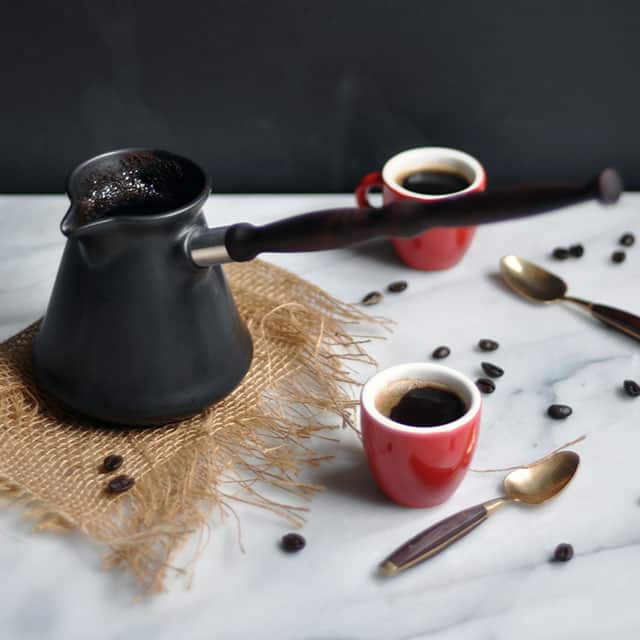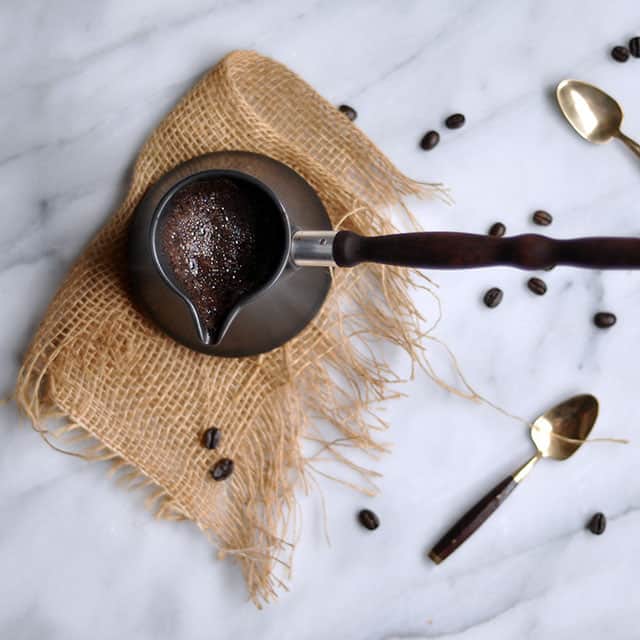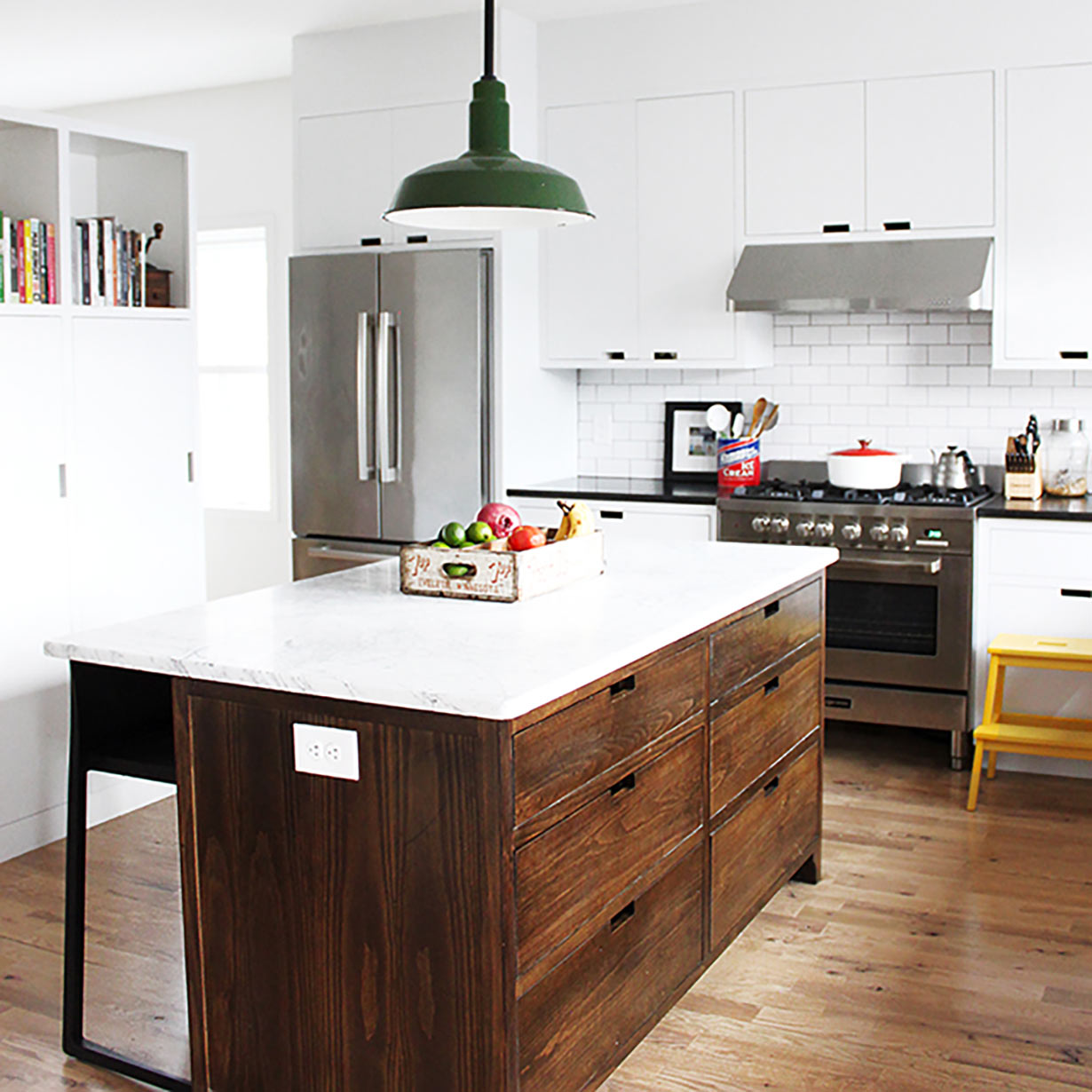Although Kasey and I both enjoy espresso, we rarely make it at home. When we want a strong and deep bite of coffee at home we brew a pot of Turkish coffee instead. The deep, earthy flavors of Turkish coffee are good anytime, but we particularly enjoy it following a meal.
To make Turkish coffee in your home you’ll need an ibrik (also known as a kanaka, cezve, or briki). It’s a special wide-bottom pot that narrows at the neck before widening slightly at the top and which is attached to a long wood handle. It’s typically made of copper but can be made of stainless steel, ceramic, or other metals. We have three in our home (stainless steel, copper, and ceramic) and the ceramic ibrik is our favorite.
Here is how you can make Turkish Coffee at home:
1. Grind
It’s important to use the proper grind when preparing Turkish coffee. Set your grinder to the finest setting available (this should be even finer than what you’d use for espresso). The resulting grinds should have a powder-like consistency. The amount of coffee you’ll need for brewing Turkish coffee will vary depending on the amount of water you used in your ibrik (see below). We recommend using approximately 5-6 grams of coffee per 50 ml of water used to fill the ibrik.
2. Add Cold Water
Add enough cold water to reach just beneath the neck of your ibrik.
3. Add Sugar (Optional)
We often don’t add sugar to Turkish coffee in our home. Nonetheless, sugar is commonly used in Turkish coffee. If you’re planning to use sugar, add it to the cold water before adding the coffee. Stir the water until the sugar dissolves.
4. Add Coffee
Use a small spoon to stir the coffee into the water. Many people like to add fresh cardamom to Turkish coffee (we often do) but this is optional. If you’re brewing with cardamom, crack open 2-3 cardamom pods to taste and add the seeds to your coffee.
5. Bring To First Boil
Heat the coffee over medium heat. If you’re ever in doubt, it’s better to err on the side of a lower heat – if it is heated too quickly there won’t be enough time for proper extraction. From this point forward you should watch the pot closely as Turkish coffee can boil over in a blink of an eye. As the coffee nears a boil it’ll start to foam. Once the foam looks close to spilling over, quickly remove the ibrik from the heat. Let it sit for a few seconds for the foam to settle.
6. Bring To Second Boil
Once the foam has settled, return the ibrik to the heat. The purpose of removing the coffee from the heat and returning it to a boil, is to maximize the extraction time of the coffee without burning the grounds (which could imparting a burnt or over-cooked taste). Let the coffee begin to foam again and remove before it can boil over. Let the foam settle again.
7. Bring To Third Boil
Return the ibrik to the heat for a third and final boil – again removing it just before it’s able to boil over. A good pot of Turkish coffee will have a lot of foam.
8. Serve & Enjoy!
Turkish coffee is typically served in smaller espresso-sized cups. However, if you’re not concerned with tradition, you can enjoy Turkish coffee from any mug. After pouring the coffee, wait about a minute for the sediment to settle before taking your first sip. The foam should be divided as equally as possible and the cup with the most foam is considered the most desirable traditionally. Turkish coffee is normally served with a glass of water.






